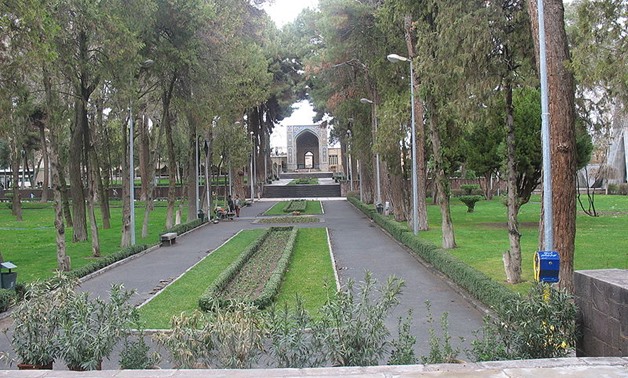
Old entrance of Khayyam garden at Imamzadeh Mahruq mausoleum in Neyshabur, Iran. March 15, 2007 - CC via Wikimedia Commons/Nik_Pendaar
CAIRO - 18 May 2019: May 18th marks the 971st anniversary of Omar Al Khayam (1048 - 1131), the prominent Iranian mathematician, astronomer, and poet whose anniversary is celebrated by Google on Saturday.
Al Khayam’s birth name is Ghiyath Al Din Abou Al Fath Omar bin Ibrahim El Khayam (Quatrains of Al Khayam). Much of his popularity is rooted in his poems known as Rubaiyat Al Khayam. His poetry reflects he adopted Sufism.
As a mathematician, Al Khayam authored “Treatise on Demonstration of Problems of Algebra” where “he gave a systematic discussion of the solution of cubic equations by means of intersecting conic sections,” according to Britannica.
Al Khayam also discovered how to extract nth roots of numbers for arbitrary whole numbers n. He was tasked by the Seljuk Sultan Malik Shah to assume astronomical observations necessary for the reform of the calendar. His efforts gave rise to the Jalālī calendar, which is a solar calendar, based on making eight of every 33 years leap years.
Al Khayam also produced the theory of proportion, and fundamental critiques of Euclid’s theory of parallels. The theory of proportion suggests enlarging the notion of number to include ratios of magnitudes.
Al Khayam was the student of Father of Medicine Ibn Sina known in the West as Avicenna. His childhood friends were scholar and vizier of the Seljuk Empire, Nizam al-Mulk, and founder of the Assassins Order, Hassan-e Sabbāh.

Comments
Leave a Comment